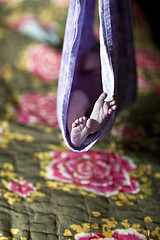It’s no surprise that the Great Recession has brought economic inequality front and center in the United States. The focus has been mostly problems in the the labor market, but Jason DeParle at the New York Times points out that other demographic changes have also had a sizable impact on growing inequality.
Estimates vary widely, but scholars have said that changes in marriage patterns — as opposed to changes in individual earnings — may account for as much as 40 percent of the growth in certain measures of inequality.
To illustrate how changes in family structure contribute to increasing inequality, DeParle turns to the research of several sociologists. One issue is the fact that those who are well off are more likely to get married.
Long a nation of economic extremes, the United States is also becoming a society of family haves and family have-nots, with marriage and its rewards evermore confined to the fortunate classes.
“It is the privileged Americans who are marrying, and marrying helps them stay privileged,” said Andrew Cherlin, a sociologist at Johns Hopkins University.
A related trend is the educational gap between women who have children in or out of wedlock.
Less than 10 percent of the births to college-educated women occur outside marriage, while for women with high school degrees or less the figure is nearly 60 percent.
This difference contributes to significant inequalities in long-term outcomes for children.
While many children of single mothers flourish (two of the last three presidents had mothers who were single during part of their childhood), a large body of research shows that they are more likely than similar children with married parents to experience childhood poverty, act up in class, become teenage parents and drop out of school.
Sara McLanahan, a Princeton sociologist, warns that family structure increasingly consigns children to “diverging destinies.”
Married couples are having children later than they used to, divorcing less and investing heavily in parenting time. By contrast, a growing share of single mothers have never married, and many have children with more than one man.
“The people with more education tend to have stable family structures with committed, involved fathers,” Ms. McLanahan said. “The people with less education are more likely to have complex, unstable situations involving men who come and go.”
She said, “I think this process is creating greater gaps in these children’s life chances.”
As sociologists and others have shown, the income gap between those at the top and bottom has changed dramatically over time.
Four decades ago, households with children at the 90th percentile of incomes received five times as much as those at the 10th percentile, according to Bruce Western and Tracey Shollenberger of the Harvard sociology department. Now they have 10 times as much. The gaps have widened even more higher up the income scale.
But again, DeParle notes that marriage, rather than just individual incomes, makes a big difference:
Economic woes speed marital decline, as women see fewer “marriageable men.” The opposite also holds true: marital decline compounds economic woes, since it leaves the needy to struggle alone.
“The people who need to stick together for economic reasons don’t,” said Christopher Jencks, a Harvard sociologist. “And the people who least need to stick together do.”
For more on the Great Recession and inequality, check out our podcast with David Grusky.







